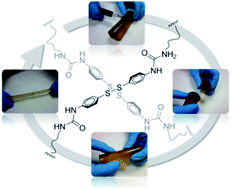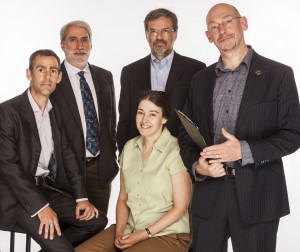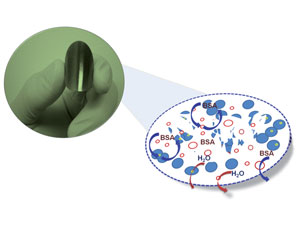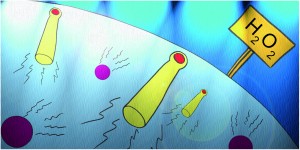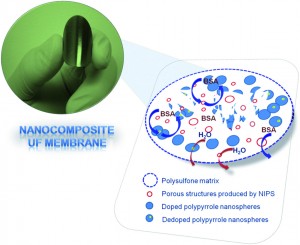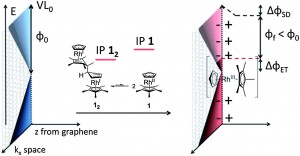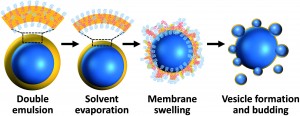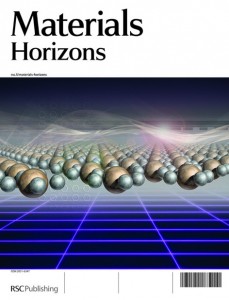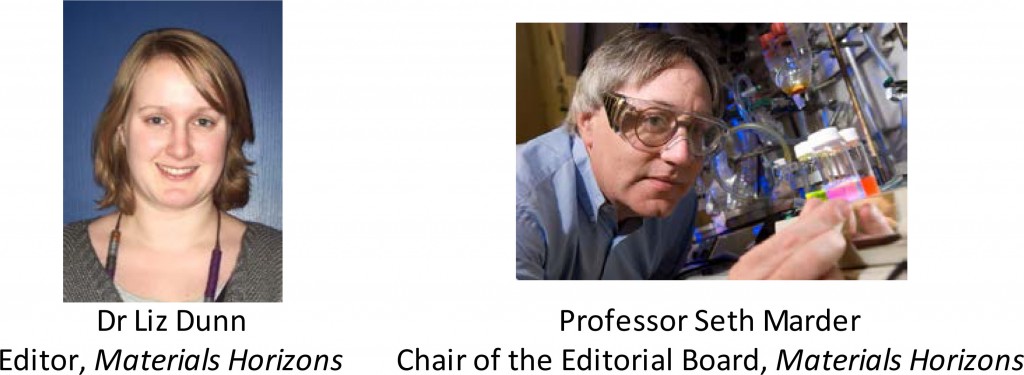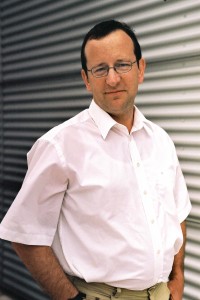Molecular Crystalline Materials with Tunable Luminescent Properties: From Polymorphs To Multi-component Solids
Dongpeng Yan and David G. Evans
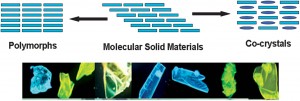 Tuning and controlling the luminescent properties of molecular materials by changing the orientation and arrangement of the fluorophores within a solid has played an important role in realizing multi-color emission. The formation of polymorphs and multi-component molecular solids have attracted considerable interest as new ways of achieving controllable luminescence and other photophysical properties for application in the next generation of photofunctional materials. In this article, recent advances in the synthesis of fluorescent polymorphs and multi-component materials and potential photo-related applications of the resulting materials are described. We first review the methods of preparation of polymorphs with tunable static luminescence, and the switching of the dynamic luminescence between polymorphs for potential sensor applications is also introduced. Attention is then focused on the supramolecular design (making use of hydrogen bonding and halogen bonding interactions) and methods of fabrication of multi-component molecular solids, and their color-tunable fluorescence and phosphorescence together with their stimuli-responsive properties for use as sensors. The use of density functional theory to study intramolecular and intermolecular energy transfer as well as the electronic structures of multi-component molecular solids is also outlined. Finally, we briefly discuss perspectives for the further development of these luminescent molecular solid-state materials.
Tuning and controlling the luminescent properties of molecular materials by changing the orientation and arrangement of the fluorophores within a solid has played an important role in realizing multi-color emission. The formation of polymorphs and multi-component molecular solids have attracted considerable interest as new ways of achieving controllable luminescence and other photophysical properties for application in the next generation of photofunctional materials. In this article, recent advances in the synthesis of fluorescent polymorphs and multi-component materials and potential photo-related applications of the resulting materials are described. We first review the methods of preparation of polymorphs with tunable static luminescence, and the switching of the dynamic luminescence between polymorphs for potential sensor applications is also introduced. Attention is then focused on the supramolecular design (making use of hydrogen bonding and halogen bonding interactions) and methods of fabrication of multi-component molecular solids, and their color-tunable fluorescence and phosphorescence together with their stimuli-responsive properties for use as sensors. The use of density functional theory to study intramolecular and intermolecular energy transfer as well as the electronic structures of multi-component molecular solids is also outlined. Finally, we briefly discuss perspectives for the further development of these luminescent molecular solid-state materials.
Mater. Horiz., 2014, DOI: 10.1039/c3mh00023k, Advance Article
A Shape-memory scaffold for macroscale assembly of functional nanoscale building blocks
Huai-Ling Gao, Yang Lu, Li-Bo Mao, Duo An, Liang Xu, Jun-Tong Gu, Fei Long and Shu-Hong Yu
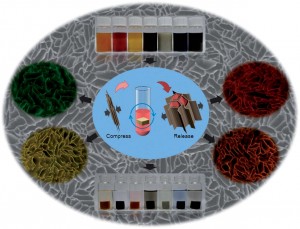
A shape-memory chitosan scaffold (CSS) fabricated by an ice-templated method can be used as a versatile host matrix for self-assembly of a wide range of functional nanoscale building blocks, and thus it can produce a family of functional three-dimensional (3D) macroscale assemblies, which show promising practical application potential in various fields.
Mater. Horiz., 2014, DOI: 10.1039/c3mh00040k, Advance Article
Large-area arrays of three-dimensional plasmonic subwavelength-sized structures from azopolymer surface-relief gratings
Robert J. Moerland, Jenni E. Koskela, Aleksandr Kravchenko, Mikael Simberg, Stefan van der Vegte, Matti Kaivola, Arri Priimagi and Robin H. A. Ras
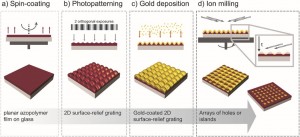
The field of plasmonics allows for confinement and control of light on the nanoscale. Due to potentially strong resonant interactions that light can have with metal nanoscale structures, metals are a good candidate to tailor interactions with light, e.g., periodic arrays of subwavelength metal structures can support extremely narrow resonances and show enhanced transmission. The field of plasmonics has evolved from using simple geometries to the desire to create complex nanostructures for improved control. The availability of fabrication techniques that provide for complex structures, however, is paired with the seemingly inevitable increase in complexity of fabrication techniques themselves. We present a facile and scalable method for the fabrication of periodic arrays of unique three-dimensional subwavelength-sized structures such as tapered holes and pyramidically shaped subwavelength-sized particles. The procedure consists of holographic inscription of a two-dimensional surface-relief grating in an azobenzene-containing polymer film, evaporative gold deposition and broad-beam ion milling of the relief structure. The method allows the fabrication of highly uniform arrays with tunable lattice parameters and dimensions over large sample areas. The optical response of the fabricated structures is determined experimentally and through simulation, which confirm the unique plasmonic response of the structures. While the proposed fabrication method has clear benefits for plasmonics, it could easily be applied also in other fields, for example by using other coating materials.
Mater. Horiz., 2014, DOI: 10.1039/c3mh00008g, Advance Article
Magnesium-air battery: from principle to application
Tianran Zhang, Zhanliang Tao and Jun Chen
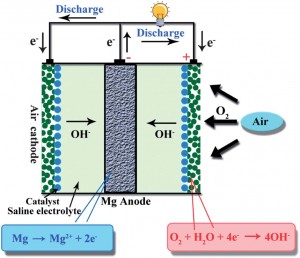
Metal–air batteries are important power sources for electronics and vehicles because of their remarkable high theoretical energy density and low cost. In this paper, we introduce the fundamental principles and applications of Mg–air batteries. Recent progress in Mg or Mg alloys as anode materials and typical classes of air cathode catalysts for Mg–air batteries are reviewed. In the meantime, different compositions of the electrolyte are also compared. The design of electrode materials both for anodes and cathodes of Mg–air batteries is discussed for further performance improvement. It is noted that in the development of rechargeable Mg–air batteries, bi-functional catalysts with reversible oxygen reduction and evolution reactions are facing challenges and it is worthwhile devoting much effort to this.
Mater. Horiz., 2014, DOI: 10.1039/c3mh00059a, Advance Article
Formation and Processability of Liquid Crystalline Dispersions of Graphene Oxide
Rouhollah Jalili, Seyed Hamed Aboutalebi, Dorna Esrafilzadeh, Konstantin Konstantinov, Joselito M. Razal, Simon E. Moulton and Gordon G. Wallace
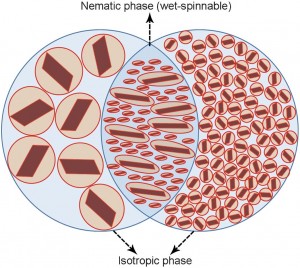 Rational control over the formation and processability, and consequently final properties of graphene oxide liquid crystalline dispersions has been a long-standing goal in the development of bottom-up device fabrication processes. Here we report, the principal conditions through which such levels of control can be exercised to fine-tune dispersion properties for further processing.
Rational control over the formation and processability, and consequently final properties of graphene oxide liquid crystalline dispersions has been a long-standing goal in the development of bottom-up device fabrication processes. Here we report, the principal conditions through which such levels of control can be exercised to fine-tune dispersion properties for further processing.
Mater. Horiz., 2014, DOI: 10.1039/c3mh00050h, Advance Article
Follow the latest journal news on Twitter @MaterHoriz or go to our Facebook page.


